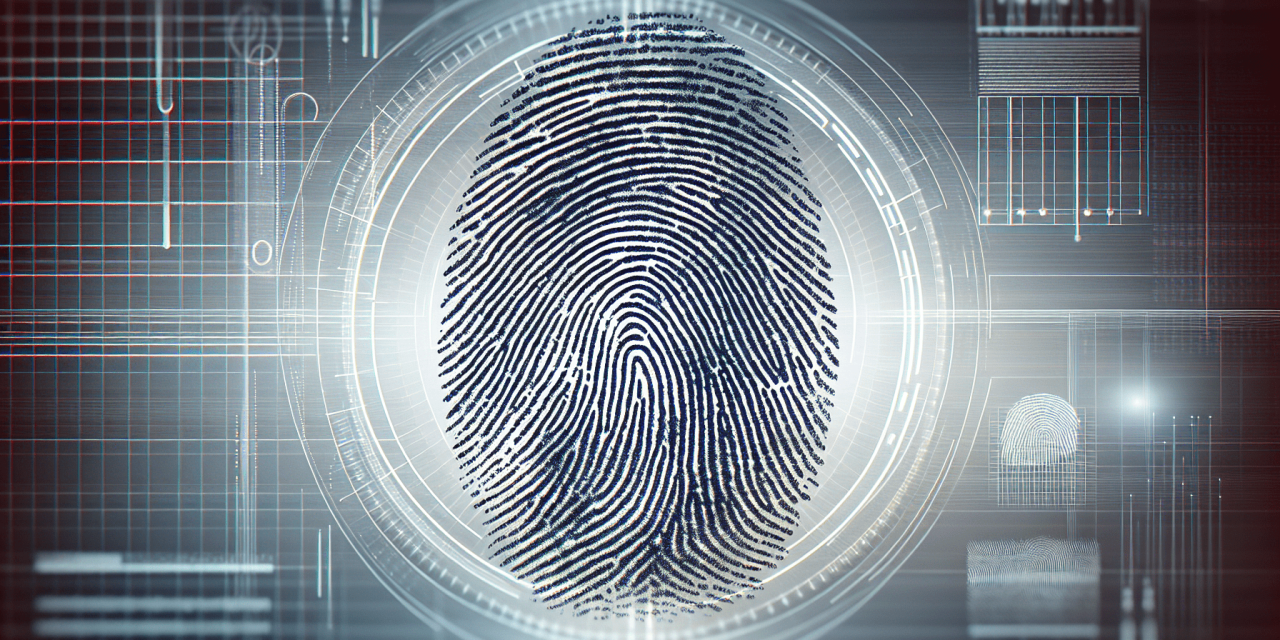Imagine a world where every online transaction and interaction could be automated and completed without any human involvement. Sounds convenient, right? Well, not entirely. As technology advances, the need for human verification becomes increasingly crucial. From preventing fake online reviews and spam emails to protecting sensitive data and ensuring fair online competitions, human verification plays a pivotal role in maintaining authenticity and trustworthiness in our digital age. In this article, we will explore the importance of human verification and how it serves as a vital safeguard against the rising tide of malicious activities in the online world.
The Risks of Automation
Automation has undoubtedly revolutionized many industries, providing increased efficiency and accuracy in various processes. However, it is crucial to recognize its limitations and the potential risks it can pose. One significant limitation of automation is its inability to handle complex situations that involve human judgment. Automated systems cannot fully replace human intuition, experience, and the ability to detect subtle patterns and nuances.
The limitations of automation
Automated systems are designed to follow predefined rules and algorithms, making them efficient in handling repetitive tasks and straightforward processes. However, when faced with ambiguous or unique scenarios, they may struggle to adapt and provide accurate results. For example, in the field of security, automated verification systems may encounter difficulty in identifying sophisticated fraud attempts or detecting evolving threats.
The potential for errors and false positives
Despite their precision and efficiency, automated systems are not immune to errors. Machine learning algorithms, which are often used in automation, rely heavily on past data to make predictions and decisions. However, these algorithms can be vulnerable to biases, inaccuracies, and false positives. This can lead to incorrect judgments, false accusations, or unnecessary actions taken based on flawed information.
The consequences of relying solely on automated verification
Relying solely on automated verification without human judgment can have severe consequences. Inaccurate decisions made by automated systems, whether due to limitations or errors, can lead to financial losses, reputational damage, or harm to individuals. Moreover, automated systems may lack the ability to consider the larger context and potential impacts of their decisions, which can result in unintended consequences or ethical implications.
The Role of Human Judgment
Human judgment plays a critical role in decision-making processes, especially when it comes to complex or ambiguous situations. Unlike automated systems, humans possess the ability to detect subtle patterns and nuances that may not be explicitly defined by rules or algorithms. This allows them to assess situations holistically and consider various factors that may influence the outcome.
The ability to detect subtle patterns and nuances
Humans possess an innate ability to recognize and interpret subtle patterns and nuances that automated systems may miss. This can be particularly valuable in areas such as fraud detection, where human judgment can identify irregularities or behavioral patterns that indicate potential fraudulent activity. Additionally, in fields like cybersecurity, human experts can analyze complex data and identify anomalies that automated systems may overlook.
The importance of context in decision-making
Context is a crucial element in decision-making, as it provides a deeper understanding of the circumstances surrounding a situation. Humans excel at considering context, such as social, cultural, and environmental factors, in their decision-making process. This allows them to make informed judgments and consider the potential implications and consequences of their actions.
The value of intuition and experience
Intuition and experience are invaluable assets that humans bring to decision-making processes. Intuition, often derived from years of experience and domain expertise, enables humans to make quick and accurate judgments based on gut feelings and intuition. Experience, on the other hand, allows humans to learn from past mistakes and apply that knowledge to future situations, improving accuracy and decision-making.
Enhancing Security Measures
While automation has its benefits, human verification plays a crucial role in enhancing security measures. Human judgment can provide an additional layer of protection against fraud, safeguard sensitive data, and identify malicious activities that automated systems may overlook.
The effectiveness of human verification in preventing fraud
Fraudulent activities constantly evolve and become more sophisticated, making it challenging for automated systems to keep up. Human verification, with its ability to detect subtle patterns and nuances, can play a vital role in preventing fraud. Human experts can identify behavioral red flags, assess the legitimacy of transactions, and employ techniques that automated systems may not be able to replicate.
The role of human verification in safeguarding sensitive data
Automated systems, while efficient, may lack the capability to fully understand the sensitivity and privacy requirements of certain data. Human verification can provide an additional layer of scrutiny when handling sensitive information, ensuring compliance with privacy regulations. Humans can assess the appropriateness of data sharing, detect potential data breaches, and implement necessary safeguards.
The importance of human oversight in identifying malicious activity
Automated systems may struggle to identify subtle signs of malicious activity, such as insider threats or sophisticated cyberattacks. Human oversight, combined with automated monitoring, can help identify these threats more effectively. Human experts can analyze patterns, assess the severity of potential threats, and take appropriate actions to mitigate risks.
Maintaining User Trust
In an increasingly automated world, maintaining user trust is crucial for the success and sustainability of any organization. Human verification plays a significant role in building and retaining user trust, ensuring that decisions and actions are transparent, accurate, and align with user expectations.
The impact of human verification on user perception
Users often feel more confident and reassured when they know that human judgment is involved in decision-making processes. Human verification helps alleviate concerns about errors, biases, or false positives that automated systems may generate. This can lead to increased user satisfaction, loyalty, and overall trust in the organization.
The role of transparency in building trust
Transparency is essential in building and maintaining user trust. By providing clear and concise explanations of the verification processes and the involvement of human judgment, organizations can foster transparency. When users understand how decisions are made and feel included in the process, they are more likely to trust the system and feel confident in the outcomes.
The importance of user feedback and engagement
User feedback and engagement are valuable resources for organizations to improve their verification processes. By actively seeking user input, organizations can identify areas for improvement, address concerns, and incorporate user perspectives into decision-making. This fosters a sense of collaboration and demonstrates a commitment to user satisfaction, further enhancing trust.
Addressing Ethical Concerns
Ethical concerns are a crucial aspect when considering automation and human verification processes. Automated systems can be prone to biases and discrimination, highlighting the need for human intervention to mitigate ethical risks. Additionally, ensuring diversity in human verification processes is essential to avoid the reinforcement of biases and to promote fairness and equity.
The potential for bias and discrimination in automated systems
Automated systems are only as unbiased and fair as the data they are trained on. If the training data contains biases or discriminatory patterns, these may be perpetuated by automated systems, leading to biased decision-making. This can result in unfair outcomes, discrimination against certain individuals or groups, and perpetuation of societal inequalities.
The need for human intervention to mitigate ethical risks
Human intervention is essential to address the potential biases and ethical risks associated with automated systems. Humans can critically analyze the outputs of automated systems, identify biases, and make adjustments to ensure fairness and equity. By involving humans in the decision-making process, organizations can mitigate the potential harm caused by biased or discriminatory outcomes.
The importance of diversity in human verification processes
Diversity is crucial in human verification processes to avoid the reinforcement of biases and discrimination. Having a diverse team of human experts with different backgrounds, experiences, and perspectives provides a broader range of insights and reduces the likelihood of unconscious biases. This promotes fairness, inclusivity, and ethical decision-making.
Recognizing Complex Patterns
The ability to recognize complex patterns and behaviors is a unique skill that humans possess. Automated algorithms, while efficient in handling large volumes of data, often struggle to identify and comprehend complex patterns. Human input is crucial in detecting evolving threats and understanding intricate behaviors that may indicate potential risks or opportunities.
The ability of humans to recognize complex patterns and behaviors
Humans have an innate ability to recognize complex patterns and behaviors that may not be easily defined or analyzed by automated algorithms. In fields such as cybersecurity, human experts can identify sophisticated attack patterns, unusual user behavior, or indicators of potential threats. This allows organizations to take proactive measures to mitigate risks and protect sensitive data.
The limitations of automated algorithms in pattern recognition
Automated algorithms excel at handling vast amounts of structured data and identifying specific predefined patterns. However, they may struggle to adapt to new or evolving patterns and behaviors. This limitation can leave organizations vulnerable to emerging threats that have not been accounted for in the algorithms, highlighting the need for human expertise.
The value of human input in detecting evolving threats
Human input, combined with automated systems, is crucial in detecting and understanding evolving threats. Humans can analyze complex data, find correlations, and recognize patterns that are not explicitly defined. This enables organizations to stay ahead of emerging threats, adapt their security measures, and proactively protect their systems and data.
Preventing False Positives
False positives, or incorrect identification of legitimate activities as suspicious or malicious, can significantly impact user experience and organizational efficiency. Human verification plays a crucial role in reducing false positives, ensuring accurate and reliable outcomes that do not unnecessarily hinder legitimate actions.
The impact of false positives on user experience
False positives can cause frustration and inconvenience for users, leading to a poor user experience. When legitimate actions are flagged as suspicious or blocked, it can disrupt user workflows, delay transactions, or create unnecessary hurdles. This can result in user dissatisfaction, reduced trust, and even loss of business.
The role of human verification in reducing false positives
Human verification can help reduce false positives by providing a layer of scrutiny and judgment. Humans can review flagged activities, analyze context and intent, and make informed decisions to determine whether they are legitimate or suspicious. This allows organizations to strike a balance between security and user convenience, minimizing false positives and optimizing user experience.
Strategies to minimize false positives through human intervention
Organizations can implement strategies to minimize false positives through human intervention. This can include conducting regular reviews of flagged activities, providing clear guidelines to human experts to ensure consistency in decision-making, and leveraging user feedback to identify false positive patterns. By actively refining and improving verification processes, organizations can continuously reduce false positives and enhance accuracy.
Enhancing Accuracy and Reliability
Accuracy and reliability are critical in any verification process to ensure trustworthy outcomes. Human verification can significantly enhance the accuracy of results, minimize errors, and provide a comprehensive analysis that automated systems may struggle to achieve.
The role of human verification in improving accuracy of results
Human verification plays a crucial role in improving the accuracy of results by providing a qualitative analysis that complements automated systems. Humans can interpret data, apply specialized knowledge, and make context-specific decisions that contribute to more accurate outcomes. This can be particularly valuable in fields such as healthcare, finance, and legal industries, where precise and reliable results are paramount.
The benefits of combining automated systems with human oversight
Combining automated systems with human oversight can leverage the strengths of each approach, resulting in more accurate and reliable verification processes. While automated systems excel at handling large volumes of data and performing repetitive tasks, humans contribute their intuition, experience, and ability to think critically. This combination leads to more comprehensive analyses and reduces the risk of errors or false positives.
The potential for error reduction through human intervention
Human intervention can significantly reduce the potential for errors in verification processes. Humans can identify and rectify inaccuracies, consider broader contexts, and apply ethical and moral considerations that automated systems may not account for. By involving humans in the decision-making process, organizations can ensure that outcomes are accurate, reliable, and in line with organizational values.
Avoiding Privacy Risks
User privacy is a paramount concern in today’s digital landscape, and automation can pose potential privacy risks. Human verification plays a vital role in protecting user privacy, mitigating the risks associated with automated systems that may compromise personal data.
The importance of human verification in protecting user privacy
Automated systems, while efficient, may lack the capability to fully understand the sensitivity and privacy requirements of user data. Human verification adds an extra layer of scrutiny, ensuring that personal data is handled and protected appropriately. Humans can assess the importance and risk associated with different types of data, implement necessary safeguards, and make ethical decisions that prioritize user privacy.
The potential risks of automated systems in compromising personal data
Automated systems may inadvertently compromise personal data due to vulnerabilities or inaccuracies. They may mishandle sensitive information, share data with unauthorized parties, or incorrectly flag legitimate actions as privacy breaches. These risks highlight the importance of human oversight to detect and rectify privacy breaches, thereby safeguarding user data.
The need for human oversight in preventing privacy breaches
Human oversight is essential in preventing privacy breaches and ensuring the proper handling of user data. Humans can evaluate the appropriateness of data use, implement stringent access controls, and monitor for potential breaches or unauthorized activities. By involving humans in privacy protection processes, organizations demonstrate their commitment to safeguarding user information and building trust.
Adapting to Changing Threats
The landscape of threats and risks constantly evolves, making it crucial for organizations to adapt and stay ahead. While automated systems can provide initial detection, human expertise is necessary to adapt to new and emerging threats, understand evolving patterns, and continuously improve prevention and response measures.
The ability of humans to adapt to new and emerging threats
Humans possess a unique ability to adapt to new and emerging threats, leveraging their knowledge, intuition, and continuous learning. As new risks emerge, humans can analyze patterns, recognize novel attack vectors, and devise appropriate countermeasures. This adaptability is crucial in maintaining robust security measures and mitigating evolving threats effectively.
The limitations of automated systems in detecting evolving threats
Automated systems can struggle to detect and adapt to evolving threats, as they rely on predefined rules and patterns. Emerging threats that deviate from known patterns may go unnoticed by automated systems, leaving organizations vulnerable to new risks. Human expertise is indispensable in detecting and analyzing emerging threats, ensuring timely responses and proactive security measures.
The importance of continuous improvement and human learning
Continuous improvement and human learning are fundamental aspects of effective security measures. Humans can learn from past experiences, stay updated with the latest trends and techniques, and proactively adapt their approaches. By fostering a culture of continuous learning, organizations can ensure their security measures evolve alongside emerging threats and maintain a high level of protection.
In conclusion, while automation offers numerous benefits, it is crucial to recognize its limitations and the potential risks it can bring. Human judgment, with its ability to detect subtle patterns and nuances, plays a critical role in decision-making processes. Human verification enhances security measures by preventing fraud, safeguarding sensitive data, and identifying malicious activities. It also maintains user trust through transparency, engagement, and user feedback. Addressing ethical concerns, recognizing complex patterns, preventing false positives, enhancing accuracy and reliability, avoiding privacy risks, and adapting to changing threats all highlight the value of human verification in various domains. By leveraging human expertise alongside automated systems, organizations can achieve more accurate, reliable, and ethical outcomes, ultimately ensuring the safety and trust of their users and systems.












